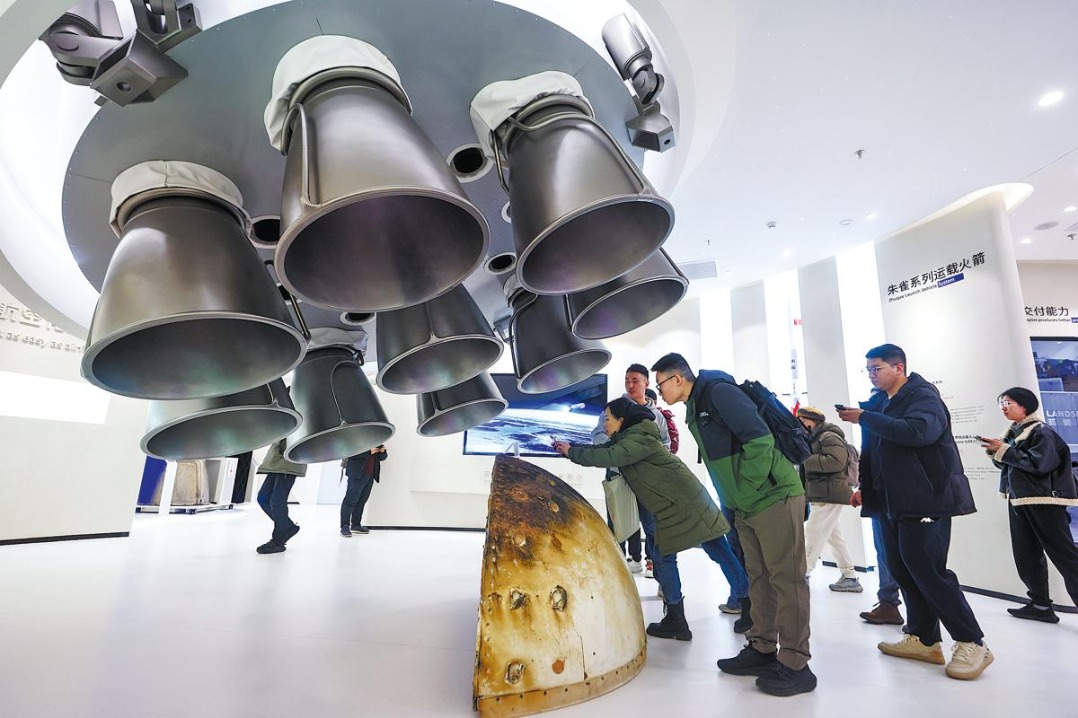Upgraded dividend
China's ascendance in manufacturing and tech sectors needs to be correctly perceived as bringing benefits to the world as a whole


Recently, in discussions with professors and students at Harvard Business School and Harvard Kennedy School, I found that many still perceive the "China dividend "through the lens of some decades-old assumptions. Such an outdated perspective inevitably fails to accurately grasp the full picture and nuanced details of China today.
So, what does the "China dividend" truly mean today? This is a question worth dissecting, and at least four key dimensions define it.
At the dawn of China's reform and opening-up, the country leveraged a vast "factory worker dividend". Within a short period, it developed the world's largest processing and manufacturing sector, drawing upon a seemingly inexhaustible supply of laborers from the agricultural sector. It was through this export-driven model, that China singlehandedly kept global labor costs low for decades.
Unfortunately, many in the West still subscribe to this outdated notion, believing that China is merely exploiting its "human resources" for labor-intensive industries and that if Western capital and technology were to withdraw, China's manufacturing sector would collapse.
But as China's industrial sector has evolved, the country has demonstrated its "technician dividend", forming the world's largest general manufacturing industry. From electromechanical products to heavy chemical goods, countless industrial clusters have created an extensive supply chain network with unparalleled collaboration and responsiveness to market demands. This ability to swiftly adjust production, control costs, and maintain high efficiency forms China's most visible economic moat.
Even as factor costs such as labor wage and land rent rise, China retains its competitive edge in producing computers, smartphones, automobiles and other high-value goods. This is why those who recognize this industrial advantage tend to fall into two camps: the enthusiastic "China admirers" who are astonished by the depth and resilience of Chinese industry, and the alarmed "China skeptics" who fear that without a "China+1" strategy, Western industries will struggle to remain competitive. The "China+1" strategy refers to a supply chain diversification scenario where companies move parts of their manufacturing operations out of China into additional countries.
Today, China is emerging as the world's leader in "engineer dividends", developing the largest cluster of advanced manufacturing and industrial service sector. The country is rapidly filling all key industrial spaces aligned with the definition of new quality productive forces: renewable energy, electric vehicles, drones, power batteries, robotics — where China's dominance is nearly uncontested. Even in fields traditionally considered "softer industries", such as biotechnology, artificial intelligence, gaming and animation, China is on the brink of major breakthroughs. Additionally, longstanding bottlenecks in industries such as semiconductors and commercial aviation are likely to be overcome in the near future.
The fundamental reason for this unexpected transformation is simple: these industries are inherently "engineering-intensive". Capital alone is not sufficient, labor alone neither. But, even having both capital and labor is not enough. What is essential is a vast industrial base with an equally vast consumer market, where a prototype product may experience painstaking and continuous trial, error and iteration through numerous real-world applications, to achieve desirable industrial progress and technological evolution. Right now, only China possesses these at scale.
Western economies have capital and can attract global talent, but they lack the expansive industrial and commercial scenarios that China provides. This structural disadvantage means that over time, it will become increasingly difficult for Western economies to match China's momentum. Those who recognize this reality in the West have largely embraced a pragmatic stance: in the foreseeable future, cooperation will be the only viable approach to engage with China's technological and industrial rise.
In the near future, China is set to harness an unprecedented "scientist dividend", fostering entirely new industries, first through incremental innovations, then the breakthroughs. The latest Nature Index rankings maybe already provide a glimpse into China's momentum: among the world's top 10 scientific institutions, in terms of research articles published in high-quality science journals across all sectors and covering all subjects, eight are now based in China. This reflects a convergence of China's vast scientific workforce and its unparalleled commitment to research funding. With tens of millions of researchers backed by trillions of dollars in R&D investment, China is generating a massive output of scientific discoveries — aligning perfectly with the principles of investment and return.
As China's capabilities in fundamental research accelerate, future breakthroughs in mathematics, physics, chemistry, biology and information sciences are increasingly likely to originate from China. These will go beyond engineering optimizations and enter the realm of true "zero-to-one" scientific innovations — many of which we may not yet even be able to fully conceptualize.
What makes China's development truly remarkable is that these four dividends — the factory worker, technician, engineer, and scientist dividends — are not competing or mutually exclusive forces. Instead, they are complementary and mutually reinforcing. Scientific breakthroughs fuel engineering applications, which in turn drive industrial scalability, ultimately leading to widespread commercial adoption. This creates a seamless ecosystem that connects cutting-edge science with everyday life scenario.
With a population exceeding a billion, a socialist outlook, and the rapid advancement of industrialization and modernization, China is poised to unleash unprecedented levels of productivity — representing the pinnacle of modern civilization's technological and economic development.

At this stage, China's contributions to global prosperity and progress will only expand. And this, perhaps, is the true definition of the "China dividend".The author is an associate researcher at the International Cooperation Center under the National Development and Reform Commission of China. The author contributed this article to China Watch, a think tank powered by China Daily. The views do not necessarily reflect those of China Daily.
Contact the editor at editor@chinawatch.cn.



































